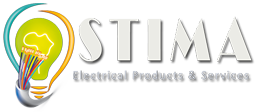Your commercial lighting can account for close to 30 percent of your business's energy use. Are you using the right lighting solution and light bulb combination to get the most of your investment? There are a multitude of lighting options available, but how do you know which is right for your business? We are here to help.
A little about Commercial and residential light fixtures
Commercial lighting is specially designed for the illumination of commercial premises in order to accommodate various business activities, from manufacturing to sales. By utilizing different colors, designs, and intensities, commercial lighting options offer custom solutions for various applications.
Commercial ballasts, for instance, are used with fluorescent lights to limit current to fluorescent bulbs and prevent them from increasing uncontrollably, overheating and burning out. A ballast is matched specifically to the light bulb it operates. Compared to residential fluorescent, these commercial fluorescent produce stronger magnetic interference, as well as more heat, making proper installation important in protecting against fire hazards and interference with electronics.
Get the Right Bulb Type for your Business
- Incandescent: Older technology makes incandescent bulbs less efficient than other choices and best utilized for task lighting requiring high levels of brightness. There are many types including: general service/standard, reflector, and xenon.
- Halogen: Twice as efficient as an incandescent, they produce a very bright white light and are commonly used in outdoor applications such as security and stadium lighting.
- HID/Metal halide: High-intensity discharge bulbs have a long life, are extremely efficient, and produce large quantities of very bright light. However with the exception of metal halides, they do not produce pleasing light colors. They are commonly used in warehouses and industrial applications.
- Fluorescent : The most commonly used commercial lighting, fluorescent and compact fluorescent bulbs (CFLs), use 1/5 to 1/3 as much electricity as an incandescent. They also last 10 times longer and have comparable lumen ratings (the rating of the amount of light a light source produces). A CFL can be used in place of an incandescent in standard light sockets for energy savings. All fluorescents contain mercury, and should be disposed of properly.
- LED: Light emitting diodes used in LED lighting are typically more efficient and longer lasting than any other type of light bulb, using 75 percent less energy than an incandescent and lasting 35 to 50 times longer.
Signs that show you Need New Lights:
- Lights are dim or flicker
- Lights don't turn on or off when they should
- Frequent light bulb burnout
- Cracked or burnt out lights
- Light bulb explosions
- Lighting color seems off
- Lights do not achieve the desired level of illumination
- A preference for softer, brighter, or cooler light
- Upgrading to longer life bulbs for convenience and savings
- The excessive energy consumption of older technology bulbs.

